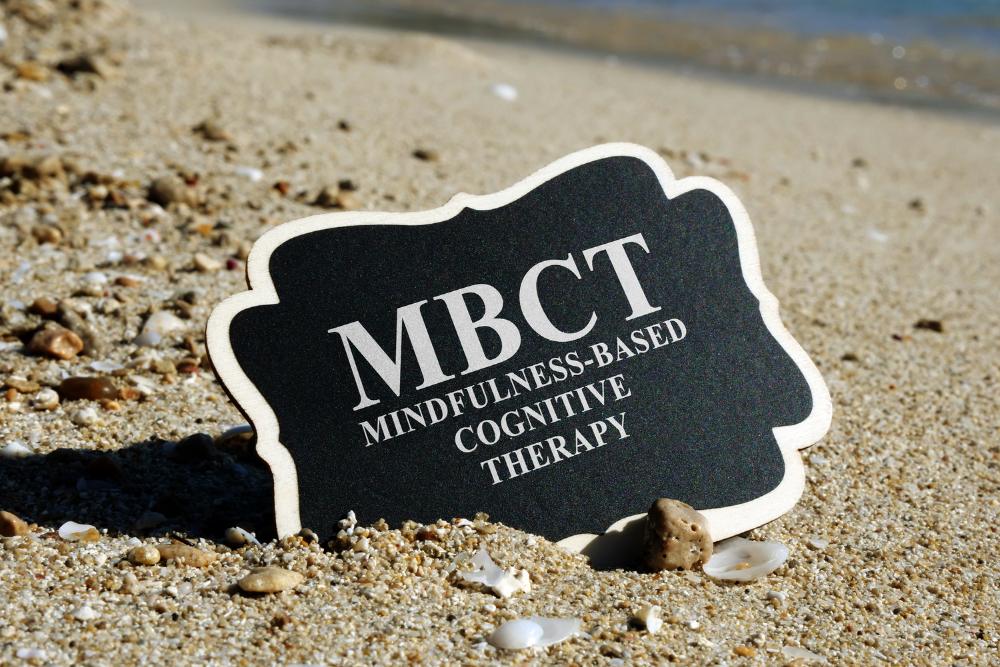One of the common issues that causes a patient to seek out therapy is depression,…

What is Eye Movement Desensitization and Reprocessing (EMDR)
What is Eye Movement Desensitization and Reprocessing (EMDR)
If you are looking into therapy options, you will want to make sure that you do your research to find the best therapy options for you. Your therapist should be able to help you, too, and advise on what sort of therapy approach should work for the symptoms you are experiencing or the mental conditions you are dealing with. EMDR is a therapy option that takes a more unique approach than some of the other choices out there.
Read on to learn more about EMDR Therapy and how it can work for you.
What Is EMDR?
EMDR stands for eye movement desensitization and reprocessing. It is a kind of therapy that is a nontraditional form of psychotherapy in that it doesn’t require much talking. Mainly, EMDR Therapy is used to treat things such as PTSD symptoms and the symptoms that arise as a response to mild or serious and emotionally intense traumatic memory, like assault or military combat. Because of the broad effects of trauma, other mental health issues are positively impacted by the use of EMDR Therapy.
Essentially, alleviation of symptoms allows clients to more readily address all aspects of their experiences. The therapy approach doesn’t rely on medications or talk therapy, as many approaches do. Rather, it utilizes the rapid and rhythmic eye movements of the patient themselves.
The EMDR therapist is able to coach the client on these movements and use them to lessen the power or impact of memories of traumatic events that occurred in the patient’s past, thus treating trauma. Sometimes, an EMDR therapist will also incorporate gentle, repetitive tapping motions into the sessions. This unique experience allows clients to process feelings that were previously stuck.
Lionheart Therapists that Use EMDR as part of their Practice
| Wegahta Berhane | Lakshmi Krishnan | Kristin Boettger | Malvern Nyamande |
| Emily Shaffer | Dr. Raechelle Paperny | Melanie Badour | Danelle Spence |
| Tasha Belix | Talia Zink | Joanna Card |
History of EMDR
If you are considering EMDR Therapy for your own needs, you should know the history and theory behind this particular therapy approach, too. It was originally developed in 1987 by Francine Shapiro and was designed specifically to treat those who were suffering from post-traumatic stress disorder.
Dr. Shapiro discovered that when eye movements were paired with the experience of difficult memories and bodily sensations, the discomfort was eased and an individual could understand the historical experience in a new and integrated way. Even today, it is still mainly used for those with this disorder.
EMDR Therapy is guided by something called the Adaptive Information Processing model. This considers the symptoms of PTSD and other trauma-related disorders– except for those that are physically or chemically based– to have resulted from disturbing experiences in the past resulting in traumatic memories. It is believed that these experiences continue to cause distress to the patient because the memories of the experiences were not processed properly at the time or afterward.
Thus, when the memories are triggered again, the associated beliefs, emotions, thoughts, and physical sensations from these are reexperienced.. This contributes to the ongoing symptoms of PTSD and other disorders.
EMDR Therapy is an individual therapy, which is delivered 1-2 times a week for a total number of sessions between 6 and 12. Some people are able to benefit from fewer sessions than this, though. It is possible for sessions to be conducted on consecutive days as well.

How Does EMDR Work?
As mentioned above, EMDR Therapy works by utilizing eye movements and sometimes gentle taps to directly alter the memories of traumatic experiences in a patient’s past. This differs from other therapy approaches, which would instead work to alter the thoughts, emotions, and responses that result from these past experiences.
In EMDR Therapy, the therapist will work to integrate how the memories of past events are experienced in the body and mind, which in turn should eliminate or at least significantly reduce the symptoms that the patient suffers from.
The use of rhythmic left-right, or bilateral, stimulation helps to encourage an accelerated learning process. EMDR Therapy is not a type of approach that utilizes talk therapy and medications, so it can be a good approach for those who are not interested in those types of treatments.
During EMDR Therapy, the patient will be encouraged to focus briefly on the trauma memory or area of discomfort in their body, and at the same time, will experience this bilateral stimulation to reduce the vividness and the emotion associated with the memory.
Steps and Phases of EMDR
EMDR Therapy utilizes an eight phases to treat post traumatic stress disorder and other disorders. Some of these involve working with your therapist, while different phases are directed by your therapist.
It is essential that you go through each phase in order to get the best results– your therapist should not allow you to move on to the next step until the previous phase has shown positive changes in you. After all, if you go onto the next step before you are fully ready, you are setting yourself up for failure in your long-term goal of treating your symptoms and disorder.
Similarly, there are risks associated with doing so as moving through the steps requires stability.
Read on to learn about what you can expect from each step below.
History-taking and Treatment Planning
The first step is the step of history taking and treatment planning. This is where you discuss your symptoms and disorder with your therapist so that you can figure out how best to start treatment. It gives the therapist a full picture of what your needs are and what exactly you are dealing with so that they can provide you with the best possible treatment!
The therapist will also perform an assessment and determine targets for treatment. Targets may include current triggers, past memories, and future goals, too!
Preparation
The second step is the preparation stage. We cannot skip ahead to this, as a large part of the preparation stage depends upon the information that was figured out during the treatment planning stage. During the preparation stage, the therapist will, as the name suggests, prepare the patient for what is to come.
They will offer an explanation about the upcoming treatments, as well as go over the procedures, such as the eye movements that will be utilized during therapy. They will begin to lead the patient through some of the exercises, almost as if in a practice round.
Assessment
The assessment stage is the third phase, and it works to activate the memory that the therapist is targeting during a particular session. To do this, the therapist will identify and assess each of the memory components– cognition, image, and also body sensation.
The therapist will utilize two different measures during sessions in order to evaluate any changes in emotion or cognition. These measures are known as the Validity of Cognition (VOC) scale, and the Subjective Units of Disturbance (SUD) scale. Both of these are also used in accordance with standardized procedures during the treatment process. Essentially, they are a pair of numbered scales reported on by the client
Desensitization
Desensitization is a stage that focuses on the memories of a patient, and at the same time, implements the eye movements that are used in EMDR. The therapist will instruct the patient to think about the specific memory that they are targeting in that session, and will then instruct them on how to engage with the eye movements at the same time.
The patient will report what new thoughts have popped up. The therapist will also determine the focus of each session by using standardized procedures, and the associated material typically becomes the focus of the next session. This will continue until the patient discovers that the memory they are targeting is not distressing anymore.
Installation
The fifth stage is known as installation. During this stage of EMDR, the preferred positive cognition is strengthened in the patient.
Body Scan
The body scan stage is the sixth step of this therapy approach. In this step, the therapist will ask the patient to observe their automatic and physical response when they think about the memory or the incident that is being targeted.
They will also be asked to identify and observe the positive cognition and any sort of residual somatic distress. If the patient does identify or report any distress related to this, the therapist will then help them to assess it using standardized procedures and bilateral movements.
Closure
Closure is one of the last phases of EMDR. It is used to end a session and wraps everything up. If the memory that is being targeted is not fully dealt with during a session, for instance, the therapist will then help the patient by providing techniques and specific instructions to deal with symptoms until the next session. These can be used to keep the patient safe and provide containment for the memory and its symptoms as well.
Re-Evaluation
Last but certainly not least is re-evaluation! This is the final stage in the EMDR Therapy approach. In this stage, the therapist will work to evaluate the patient’s current mental and psychological state, as well as whether or not the effects of the treatment have been maintained.
They will also identify any other memories that may have emerged since the previous session. Re-evaluation also involves planning for the next session, so the therapist will discuss with the client in order to identify new targets to work on in the current and future sessions.
How Effective is EMDR?
Of course, another thing that you are going to want to know if you are considering EMDR as a therapy approach is how effective it is! Over 20,000 practitioners have used EMDR Therapy with their patients since the approach was developed in 1987.
It is considered to be a safe therapy that does not have negative side effects when used according to proper protocol. The effects of the treatments have also been shown in several published reports, which pull together data from multiple studies.
Generally, EMDR Therapy takes between 6-12 sessions to successfully treat a patient’s symptoms, though they will often begin to see results within the first few sessions. Your therapist will be able to choose a treatment schedule that works best for your individual needs, but typically, the therapy is performed at least weekly, and sometimes twice a week. Sessions may also be conducted on consecutive days if your therapist or schedule deems it necessary!

Frequently Asked Questions
How does (EMDR) work?
EMDR, is a therapy approach to psychological issues. It uses the rhythmic eye movements of the therapy patient to influence their emotions and the trauma of past emotional events.
The therapy is structured in a way that it can help the patient focus on the trauma briefly but ultimately heal from it and cure the ensuing symptoms and stress.
What is EMDR used for?
EMDR Therapy is a psychotherapy approach that can be used to alleviate many different conditions. Essentially, the treatment is designed to help treat patients who have suffered trauma, and whose trauma is manifesting itself in different, unhealthy ways.
This can be particularly helpful for those who are dealing with post traumatic stress disorder, which often manifests in those who have suffered traumatic experiences and continue to have traumatic memories, for example people who have experienced assault or have served active military duty. Those who suffer from anxiety disorders that are affecting their mental health can also be helped by EMDR therapy since many of the symptoms this treatment focuses on are anxiety-related.
What is EMDR Therapy and how does it work?
EDMR is an approach to therapy in which therapists work with patients to treat their trauma and the subsequent symptoms of this trauma.
To treat these symptoms, EMDR Therapy uses movements and utilizes the rapid movements of the eyes. Besides the bilateral eye movements of EDMR, the therapy approach may also implement soft and repeated tapping motions. The patient and their therapist will work through negative emotions, memories, experiences, and more over a series of therapy sessions.
Understanding EMDR and It’s Role in Mental Health Treatment
EMDR has become a staple in the mental health and therapy world. This technique is used to help a therapist identify and treat past trauma, upsetting memories from a disturbing event and for ptsd treatment. Other mental health conditions like stress and anxiety can also be helped with this format.
The World Health Organization recognizes Eye Movement Desensitization and Reprocessing (EMDR) as an effective treatment for trauma and stress-related disorders. This therapy is particularly beneficial for individuals struggling with mental health conditions like PTSD, anxiety, and depression. Through structured EMDR sessions, individuals work with a trained therapist to process and reframe distressing memories, ultimately reducing their emotional impact.
A key component of EMDR therapy is bilateral stimulation, which often involves guided eye movements, tapping, or auditory cues. This process helps the brain reprocess distressing events, making them feel less overwhelming over time. Research suggests that this method can be highly effective in treating those who have experienced acute stress disorder following a traumatic incident.
Unlike traditional talk therapy, EMDR focuses on the brain’s natural healing mechanisms, allowing individuals to work through past experiences without needing to extensively verbalize their trauma. As awareness around trauma treatment grows, professionals continue to emphasize the importance of accessible and scientifically backed interventions for improving mental health



